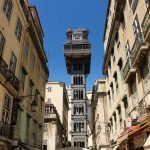No matter what city in the world you’re visiting, it’s pretty safe to assume that many iconic sights and attractions will be located downtown. In Lisbon’s case, this part of the city is known as Baixa, a key area for shopping, banking and, of course, sightseeing.
And, since there are so many great things to do in this neighborhood, I’ve decided to create this guide with the highlights you simply can’t miss while visiting Lisbon. So, buckle up and join me as I walk you through the best things to do and see in Baixa!
Index

1. HISTORY
Downtown Lisbon (or Baixa, as it’s best known) is the most central region in the city, close to pretty much all the main tourist attractions, as it extends from the Tagus riverfront to Avenida da Liberdade.
The Baixa as we know today is a result of Marquis de Pombal’s reconstruction plans after the 1755 earthquake that left the city in ruins. With its grid layout and neoclassical elements, it’s one of Europe’s first instances of urban design and city planning.
This deliberate structure also includes wide squares and straight streets, which were designed for both visual harmony and practicality, as the grid system makes it easier to navigate the area.
Today, Baixa is a lively neighborhood that acts as the business center of Lisbon, attracting locals and visitors to its shops, cafés and tourist attractions. It’s an example of Lisbon’s ability to blend tradition with progress, respecting its heritage while continuously evolving and adapting over time.
2. What to see and do in Baixa
2.1. Praça do Comércio
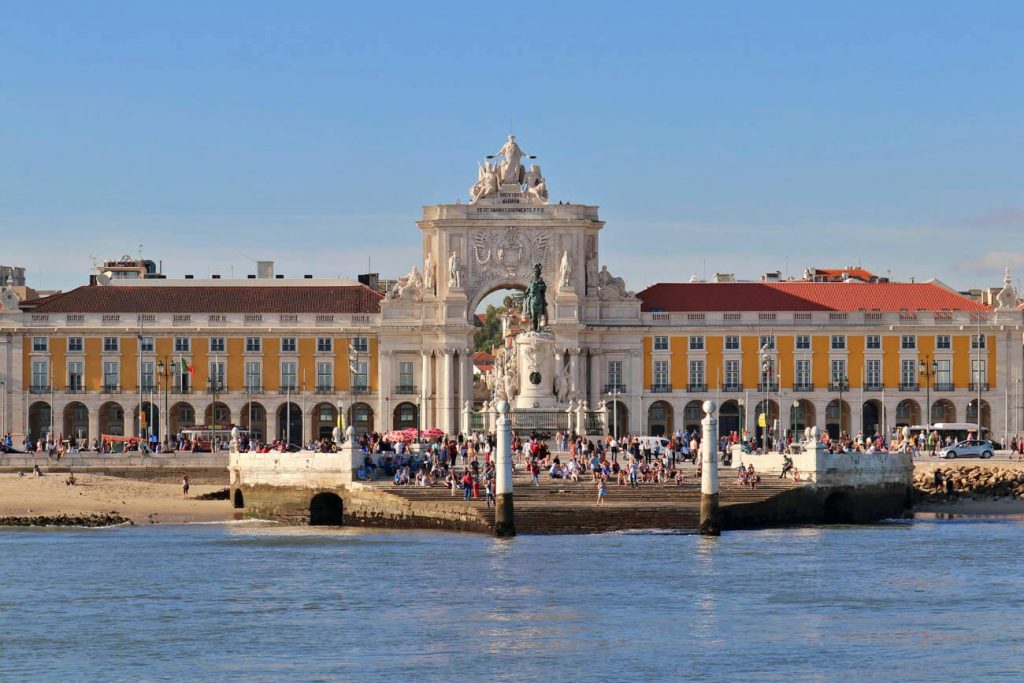
Praça do Comércio, also known as Terreiro do Paço, is Lisbon’s largest square and a significant historical site. Located by the Tagus River, it was once the arrival point for boats, linking Portugal to global trade routes.
The 1755 earthquake destroyed the original buildings around Praça do Comércio, but the square was rebuilt to symbolize Lisbon’s recovery, and now features a triumphal arch and a statue of King José I, who reigned during the reconstruction.
One of the highlights of Praça do Comércio is Martinho da Arcada, Lisbon’s oldest café dating back to 1782. There, you’ll also find a tourist office that provides information about downtown, the Lisbon Story Center (more on that later), and lots of restaurants.
2.2. Rua Augusta Arch

The Rua Augusta Arch is an important part of Lisbon’s architectural history, as it celebrates the city’s rebuilding after the 1755 earthquake. It was designed in 1775 by the architect Veríssimo José da Costa to symbolize Lisbon’s resilience, offering visitors a unique perspective of the city.
In 2013, visitors were given access to the terrace on top of Rua Augusta Arch, allowing them to see views across downtown Lisbon, as well as detailed sculptures representing parts of Lisbon’s history.
From the terrace, you’ll have a great view of Rua Augusta, the central pedestrian street in Baixa that connects Praça do Comércio with Rossio Square, and is home to various shops, cafés and restaurants.
2.3. Lisboa Story Centre

The Lisboa Story Centre, located in Praça do Comércio, presents the city’s history through models and multimedia exhibits. Divided into six sections, each of them focuses on a significant period or event from Lisbon’s past.
It begins with the early legends of Lisbon, gets into its pivotal role in the Age of Discovery, and goes on to cover the 1755 earthquake that transformed the city’s landscape and architecture. The narrative continues with information on Marquis de Pombal’s influence on what became known as Pombaline Lisbon, highlighting urban planning developments within the Baixa district.
The museum offers a multilingual audio guide and a gift shop. If you’re interested in learning about local history and understanding the city’s evolution, the Lisboa Story Centre is a must-visit!
2.4. Santa Justa Lift

The Santa Justa Lift (Elevador de Santa Justa) has been operational since 1902, connecting the Baixa district to Chiado. The lift is 45 meters tall and was initially operated on steam power before switching to electricity in 1907.
It’s impossible to look at its iron design and not think about the Eiffel Tower, which actually makes total sense, as the engineer responsible for the lift’s construction, Raoul Mesnier du Ponsard, had ties to Gustave Eiffel’s firm.
Today, the lift serves as both public transportation and a tourist attraction, and I have to say that I just absolutely love it when beautiful projects like this also serve a practical purpose! At the top, a spiral staircase leads to a platform offering panoramic views of downtown Lisbon, including Rossio Square and St. George’s Castle.
2.5. Rossio Square

Although this square is officially named Pedro VI Square, it’s more commonly known as Rossio. This is one of the most famous squares in Lisbon, easily recognizable for its wave-patterned pavement, which was replicated in Rio de Janeiro and other Portuguese colonies.
Benches around Rossio Square offer resting spots for locals and tourists to observe the daily life of downtown Lisbon, while outdoor cafés provide a place to enjoy local snacks or coffee surrounded by stunning historical architecture.
To the north is Teatro Nacional D. Maria II, a neoclassical theater integral to Baixa’s cultural scene, and two baroque fountains. At the center stands a monument to King Pedro IV, featuring his statue atop a column, surrounded by four figures symbolizing Justice, Wisdom, Strength, and Moderation.
2.6. Praça da Figueira
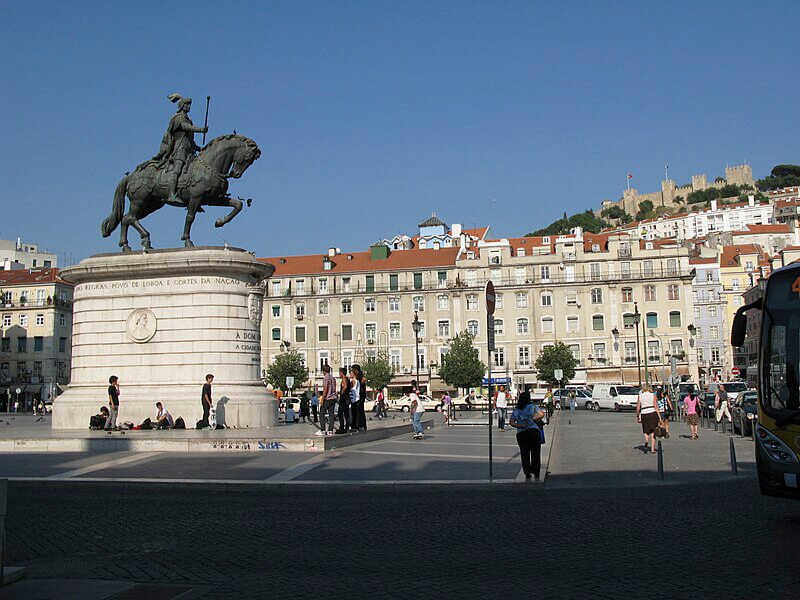
Praça da Figueira was once Lisbon’s largest covered market, and is now an important transport center in the Baixa neighborhood. It serves as a junction for various public transportation options, with trams and buses providing access to many attractions.
Every month, Praça da Figueira hosts a food market where vendors offer a variety of regional products, creating a gathering point in downtown Lisbon for locals and visitors alike.
The square also features an equestrian statue of King João I, honoring his role in Portugal’s 14th-century independence. In front of it, you’ll find the historic Confeitaria Nacional, Lisbon’s oldest pastry shop that’s been operational since 1829. It’s a great place to sit and enjoy a pastel de nata as you take in the views!
2.7. MUDE
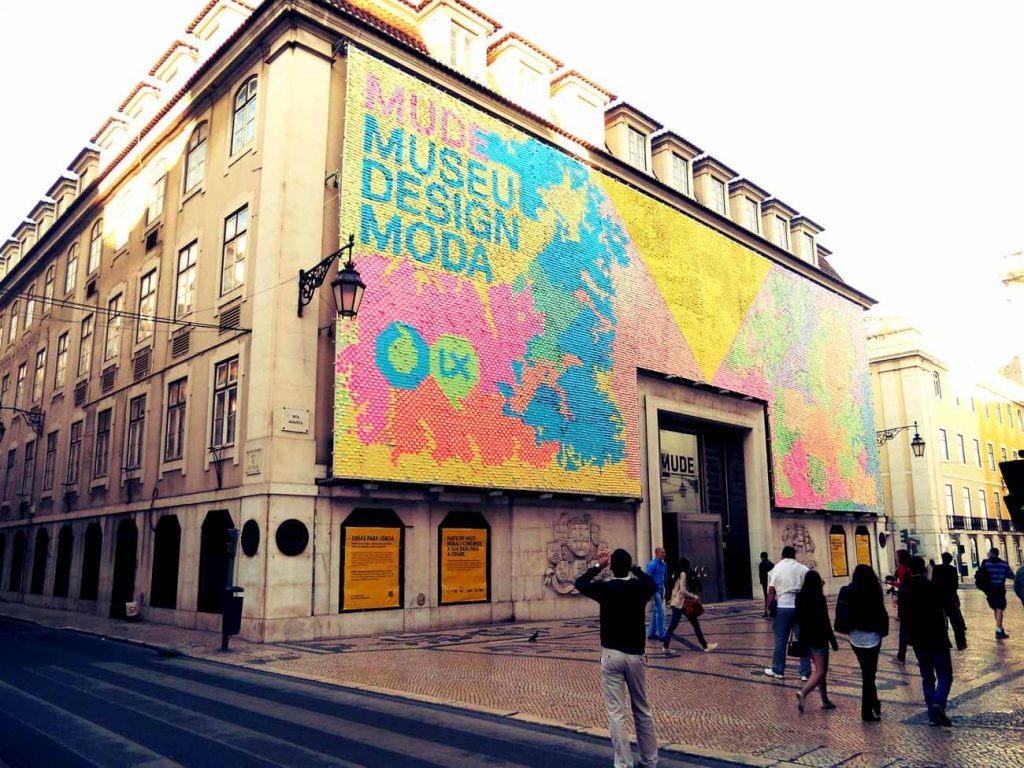
MUDE, the Museum of Design and Fashion, was established in 1999 in downtown Lisbon, housed in a former bank building. Recognized as one of the most important design museums in Europe, it features a broad collection that covers various design and fashion areas.
There, you’ll be able to explore and understand the evolution of style, as well as the intersection of aesthetics and practicality throughout history, represented by everyday items and high-end fashion pieces.
The museum features works by influential designers such as Charles & Ray Eames and Le Corbusier, along with fashion pieces from icons like Christian Dior, Tommy Hilfiger, and Yves Saint Laurent.
2.8. Livraria Bertrand

Livraria Bertrand, recognized by Guinness World Records as the oldest operating bookstore in the world, has been a cornerstone of literary culture since 1732. Located in downtown Lisbon, close to Baixa-Chiado metro station, the bookstore offers a wide range of books in both Portuguese and English, from classics to contemporary popular works.
With a welcoming and comfortable space that also features a café, Livraria Bertrand was designed to encourage visitors to take their time, read and socialize. It’s more than just a place to buy books, it’s a gathering place for book lovers to share their passion.
3. Shopping in Baixa
If shopping tends to be the highlight of your trips, then I have great news about Baixa! Downtown Lisbon is a great area for some retail therapy, one where you’ll find everything from designer to popular labels, as well as jewelry stores and local products, such as ceramics, textiles and cork items.
Baixa is conveniently located and easily accessible from all of Lisbon, with options for every preference and budget. It’s a place I recommend for everyone looking to experience Lisbon’s shopping scene, find unique items, and get to know the local commerce.
4. How to get to Baixa?
Getting to Baixa is easy from anywhere in Lisbon. Not only is it well-connected by public transport, such as trams, buses and metro, but it’s also centrally located and close to other neighborhoods.
If you’re near Alfama, Chiado, or Bairro Alto, you can walk to Baixa, which I recommend for a more immersive city experience. Alternatively, the Rossio and Baixa-Chiado metro stations provide primary access points into downtown Lisbon.
When you’re already in Baixa, you’ll notice that navigating this neighborhood is very simple, because of its organized streets forming a grid layout. This will help you situate yourself in the city, and facilitate exploring all the architectural and historical landmarks.
5. Where to stay in Baixa?
If staying right in the middle of all the action is something that is important to you, or if you’re only in Lisbon for a few days, downtown Lisbon is exactly the place you should stay.
Though prices may be a bit more elevated due to the privileged location, it’s definitely worth spending a few more bucks to stay in such a central area of Lisbon. Here are my main hotel recommendations in Baixa:
- International Design Hotel: situated within walking distance of Chiado, this hotel offers a modern and trendy atmosphere, a restaurant and welcome drink. The rooms are spread over four differently themed floors and have views over the historic center.
- Browns Central Hotel: only 130 meters from the Baixa-Chiado metro station, this hotel provides modern furniture, marble bathrooms equipped with kettles and coffee machines as well as Smart TVs. It serves breakfast daily and is conveniently close to many restaurants.
- Hotel Lis Baixa: a 3-star hotel with modern rooms themed after Portuguese literature, fashion, or architecture. The hotel also offers car/bicycle rentals, laundry services along with a 24-hour front desk. A buffet breakfast is available each morning, and the Rossio Station is only a five-minute walk away.
Ready to explore Lisbon’s memorable downtown?
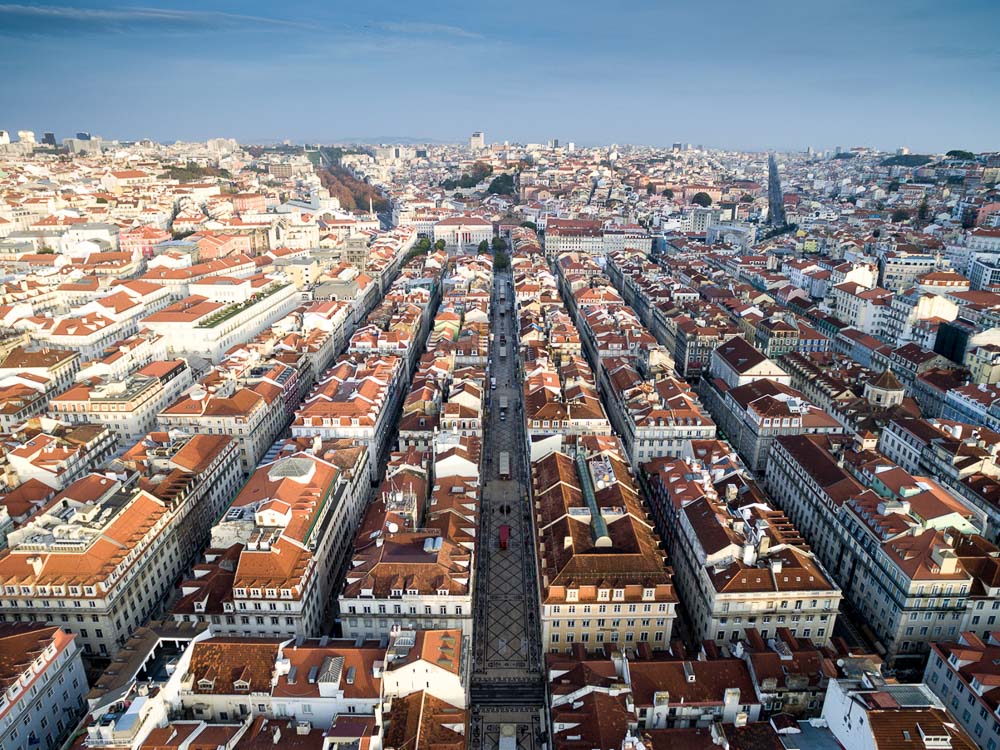
The Baixa, or downtown Lisbon, is a very central and active neighborhood, perfect for exploring the city’s history, culture, and cuisine. Not only that, but it’s also a place that will give you a chance to experience everyday life in Lisbon more authentically than some other tourist areas.
It doesn’t matter whether it’s your first or 10th time visiting Lisbon, going to Baixa is practically inevitable! After all, with its convenient location near places like St. George’s Castle, Alfama, and the Cais do Sodré, it’s the ideal starting point for any visit.
I hope this guide was helpful, and that you have an unforgettable time visiting downtown Lisbon!


